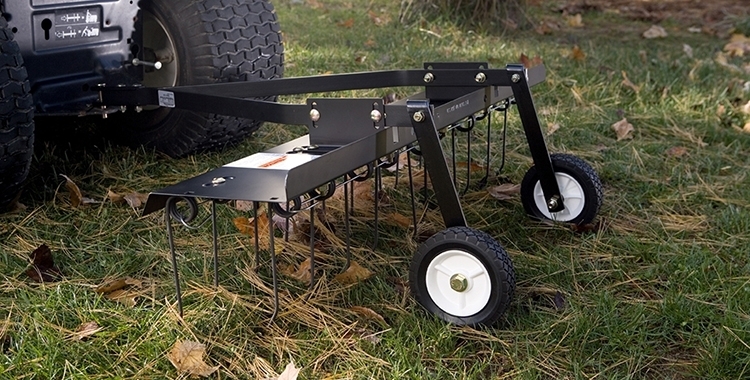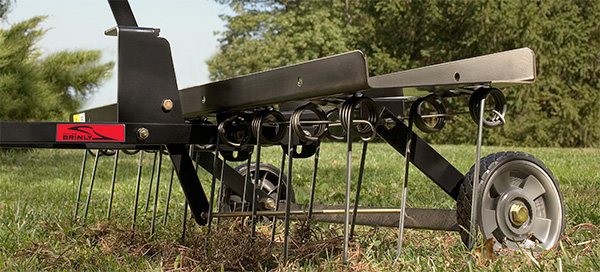Dethatching your lawn the easy way
Lawn thatch is a layer of grass clippings, dead leaves, and other organic material that builds up underneath your lawn, just above the topsoil. A small amount is essential and protects the roots of the grass, but having too much prevents air, water and nutrients from reaching them. This also creates an environment that is conducive to disease and pests. Dethatching your lawn is crucial to its long-term health and beauty.
1) Testing: A serious thatch problem is usually evident just by walking on the lawn, if you know what to look for. If your lawn feels springy or crunchy underneath your feet, there is a good possibility that you have a thick layer of thatch lurking under the grass. You can test the thatch accumulation by removing a small piece of your lawn and examining it. With a hand spade, remove a 2-3″ thick plug of sod. If there is more than ½ inch of brown organic material, it’s time to dethatch.
2) Timing: Dethatching is stressful for your lawn. We recommend dethatching just prior to your lawn’s most vigorous growth cycle. This way, the grass can heal and recover quickly. Cool season grasses like ryegrass, fescue, and Kentucky bluegrass should be dethatched between August and October, giving it ample time to recover before the first hard frost. Warm season grasses should be dethatched in the spring (after a mowing or two). Don’t dethatch immediately following a hard rain when the soil is sopping wet, the softness of the soil may cause portions of the grass to be pulled up by the root. Conversly, you want to avoid dethatching your lawn when the soil is very dry or during times of drought. Moderately moist soil is ideal.
3) Trimming: Mowing the lawn at half its normal height just prior to dethatching allows the tines to operate with less interference. Shorter is better for dethatching, but you don’t want to cut too short and risk exposing the roots and killing the grass. We never recommend a mowing height below 1 inch.
Click here for more information on dethatchers
Author: Brad Turner



